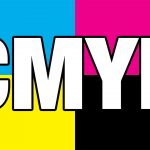Offset Printing Trends For 2018
Overall, 2017 was a terrific year for the offset printing industry, with companies, collaborations, and innovations. The offset printing industry is such an evolving industry, so it’s not necessarily easy to forecast what’s in store for offset printing. In this article, we’ll look at Offset Printing Trends For 2018.
1. Push to Stop Printing
Push to Stop, or alternatively “autonomous, navigated printing” is a thrilling idea announced in late 2016 by HEIDELBERG that automates the print process in a cutting-edge new way. Recognizing that the clearest risk posed by electronic digital printing is within efficiency times, the “Push to Stop” technology eradicates printer inefficiencies in remarkable ways. “The trend in the direction of ever-smaller run lengths and a growing number of jobs per press proceeds unabated : in which once ten jobs per day were regular, this quickly became ten jobs per shift, and these days highly industrialized commercial printing companies, specifically, are actually creating ten jobs an hour – even more – on just one press . In spite of this, with a workload similar to this and provided the needed speed, the operator quickly comes up against his physical and mental constraints,” the business writes in a press release.
2. Customized Service
Offset printers can key into the craze of customized service by teaching their clients on the importance offset printing delivers to a company. Colors ( such as Pantone), finishes, and material are all possibilities for branding to be understood in an end product. Even though it’s correct that in many instances, personalization might be looked for smaller sized runs ( and that’s a distinct segment supplying in and of itself), it’s also beneficial to recognize the custom primary advantages of offset printing.
3. Economical Technology
Technological efficiencies are continuing to be observed for offset printing, taking on numerous roles in the process. Even though Print to Stop ( as mentioned above ) is described as a “philosophy” of autonomous, automated printing, other manufacturers are treating specific efficiency problems like sheetfed automation, faster functioning speeds, and optimization for short-runs.





